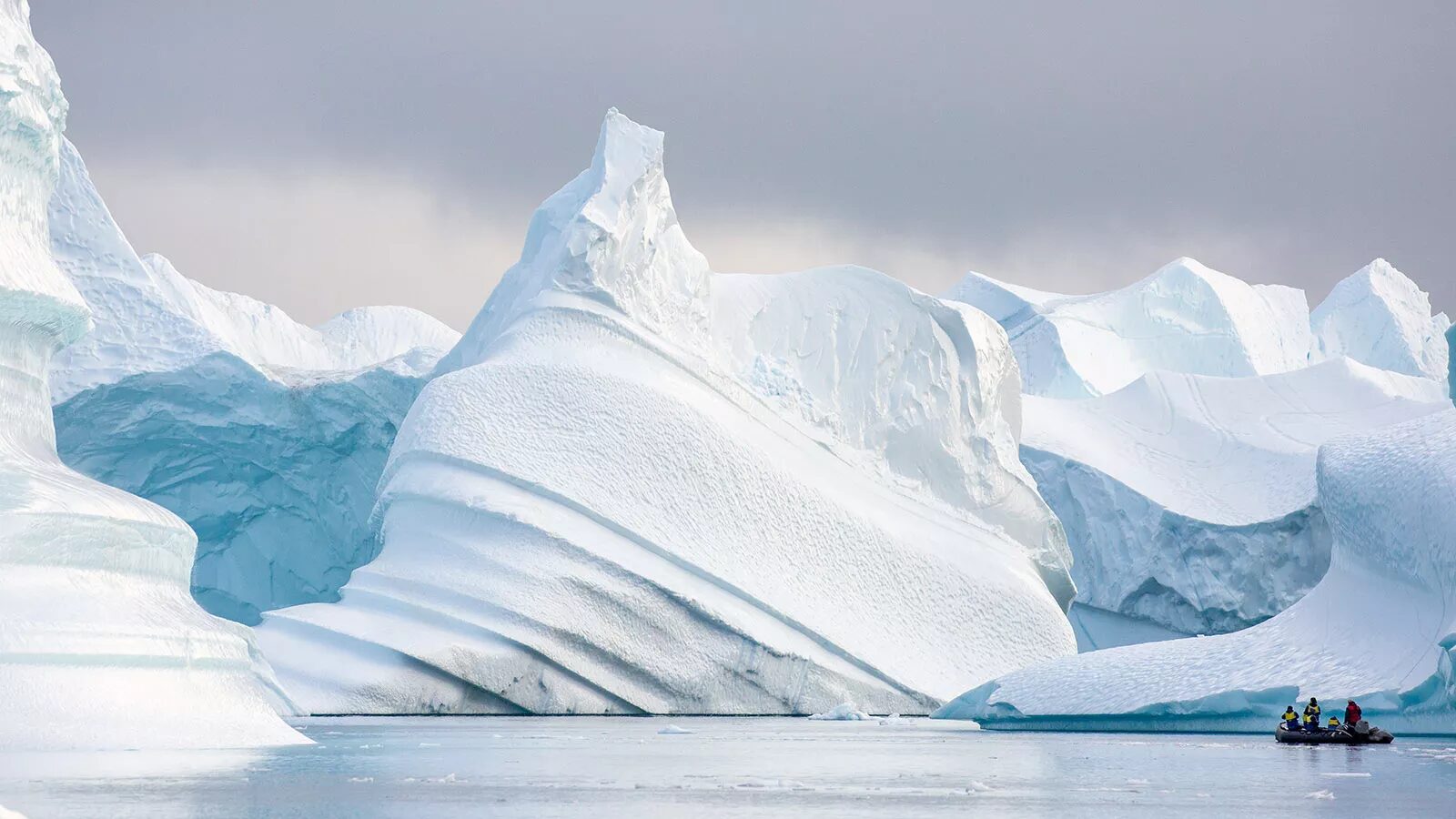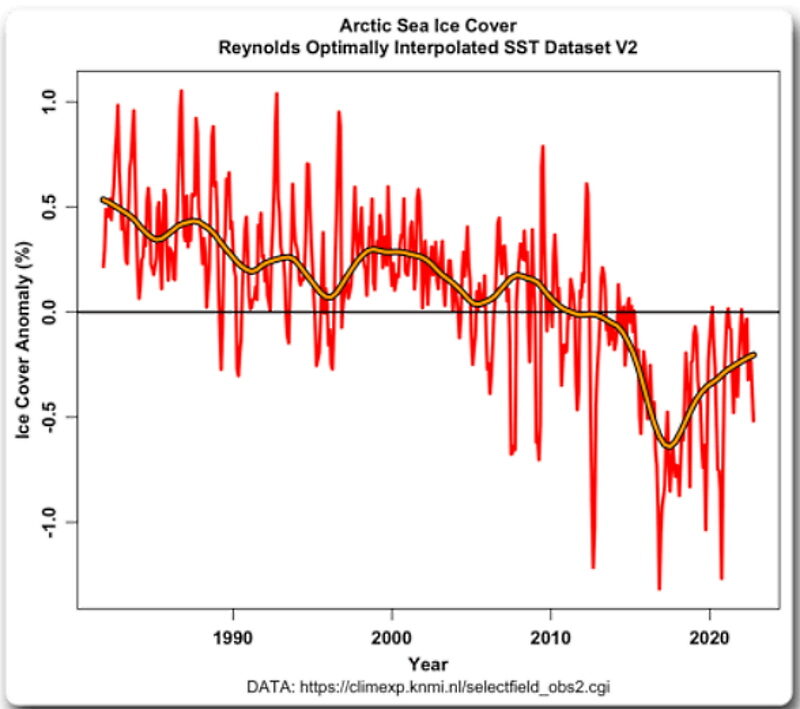The above graph shows changes in Arctic sea ice cover during the satellite era. Values are anomalies from the 1991-2020 average. Eschenbach notes that since around 1990, people have been talking about how human-emitted carbon dioxide is reducing the amount of Arctic sea ice. When it started dropping very fast, there was talk we'd passed a 'tipping' point from which the ice would never recover. Over this time, noted Eschenbach, predictions of an ice-free Arctic ocean abounded.
Old habits die hard. Despite the impressive recent ice recovery, talk of these tipping points - mostly an invention of so-called 'attribution' computer models - are ubiquitous. In his recent Frozen Planet II agitprop series for the BBC, Sir David Attenborough made a number of model-produced references to the Arctic being free of summer sea ice by 2035.
According to Eschenbach, there are more mysteries down in Antarctica.
Here Eschenbach poses the question - why did the Antarctic ice pack, unlike the Arctic pack, start increasing quite rapidly around 2008? Nobody knows, he says. Why did it differ from the Arctic by plateauing from 2010 to 2015, but then mirror the Arctic by dropping rapidly, and then turn around and start rebounding? You guessed it - nobody knows.
Finally the global situation.
Why has global sea ice followed this pattern, while CO2 continues to rise in the atmosphere, he asks. The politically-motivated alarmists constantly tell us the ice will soon all disappear. According to Eschenbach, not one climate scientist on the planet predicted these large changes in sea ice.
The author concludes:
Here's the strangest part. Despite the failure of the many predictions of an 'ice-free Arctic', despite the falsified claims that we've passed a 'tipping point', despite the fact that the reasons for the curious and unexpected changes in the polar sea ice cannot be explained by anyone and the changes weren't predicted by anyone - climate change scientists still insist that they can tell us what the global temperature will be like in the year 2100.Of course, there are many sceptical scientists who seek answers to the cyclical nature of global ice outside the restrictive confines of 'settled' climate science. As the Daily Sceptic has often reported, short-term movements of ice are affected by often incalculable atmospheric heat exchanges, ocean currents and many other natural climatic variations.
The geologist Professor Ian Plimer recently noted in an essay published by Quadrant, there have been six major ice ages and each started when there was far more CO2 in the atmosphere than now. Taking the longer view, Plimer said that we are currently in an ice age initiated 34 million years ago, the current interglacial started 14,400 years ago in the Northern Hemisphere, and we were at the peak of this interglacial 4,000-7,000 years ago in the Holocene Optimum.
Two American geologists recently found that over half of the Arctic's glaciers and ice caps that exist today did not exist or were smaller 3,400 to 10,000 years ago. At the time, atmospheric CO2 ranged between 260 to 270 parts per million, compared to the current 410 ppm. At the peak of this interglacial Arctic warming, temperatures were noted to be several degrees warmer than today. Change in the size of glaciers and ice caps over the last few centuries "is but a partial return to a former period of much greater warmth", the geologists suggest.
Political tactics designed to scare entire populations into following an anti-growth Net Zero future pay little attention to such trends. Global warming ran out of steam a couple of decades ago, and the latest satellite data for November is almost certain to extend the current eight year, one month pause. Instead a 'highway to hell' message is broadcast, based almost solely on invented stories attributing bad or 'extreme' weather to the activities of humans. Despite the overwhelming evidence from the past that global temperatures can rise and fall rapidly, an entire climate industry, backed by almost unlimited transfers of wealth from often poor to rich people, has sprung up forecasting Armageddon if there is a rise of a few parts of a degree centigrade.
It's definitely all a bit of a mystery.
Chris Morrison is the Daily Sceptic's Environment Editor.







At least there is reference made to time spans in the thousands of years and the cyclical nature of ice ages and our climate but the narrow window of data in the charts is how the CO2 fear mongers work, so I'm wondering why include them and not graphics covering two hundred years or thousands?